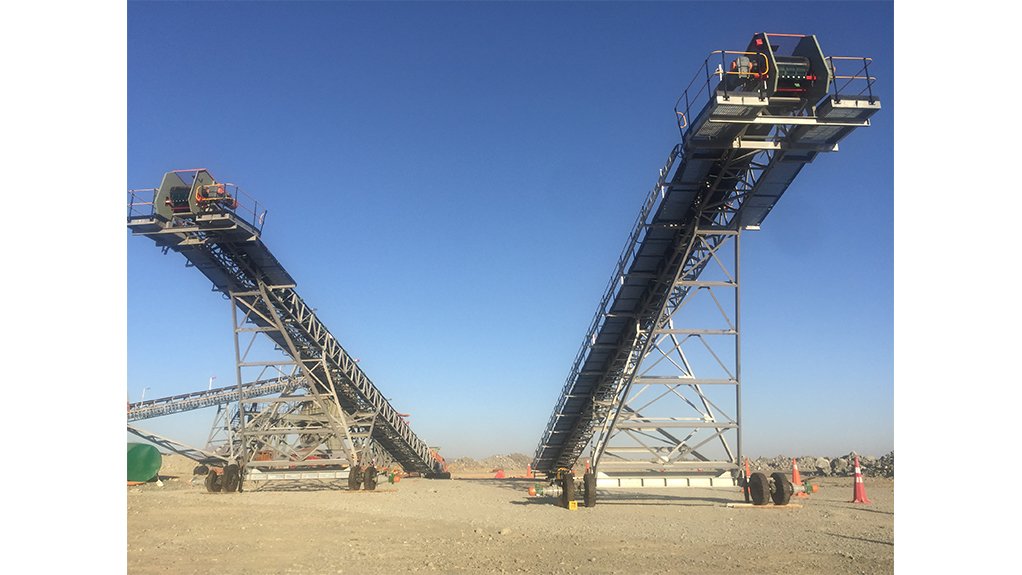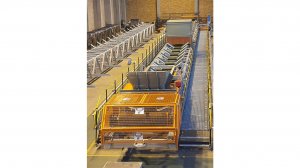Engineering, mining services and industrial manufacturing specialist NEPEAN Conveyors recently unveiled two ground-breaking conveyor component solutions in South Africa – a conveyor belt monitoring system (ROXON HX270) and an extreme environment liner material (ROXDUR). The company also locally developed a range of standard plant conveyors with the aim of delivering these conveyors in as short as possible time to the market at competitive pricing.
The company asserts that both ROXON HX270 and ROXDUR, which were introduced prior to the Covid-19 outbreak, are “unique” and “unparalleled” in the market.
NEPEAN Africa sales manager Jacques Steyn highlights that while there are several belt condition monitoring products available, “the ROXON HX270 sets a new benchmark” as a fast and accurate, noncontact three-dimensional (3D) measurement system that uses a combination of laser and high-speed camera technologies.
Additionally, the monitoring system is impervious to belt colour and texture, consequently enabling it to automatically detect and provide an early warning of damage or defects on an operational belt.
The system can be monitored online through local and/or remote user interface access, he explains.
The ROXON HX270 system works equally well on textile and steel cord belts, with Steyn noting that, “we found that virtually all significant belt damage can be detected from the 3D shape of the belt surface. A broken cord in a steel cord belt, for example, will produce a unique pattern on the belt surface, which will be detected by the system”.
“It is also an intelligent learning system, which means that if new defects or damages are detected, they are added to the defects library.”
Each belt is fitted with a reference tag where the exact position and detail of each defect or damage is recorded; this allows for repairs to be planned, as well as move the defect to a splicing or repair station for convenient repair operations.
Steyn further points out that the ROXON HX270 provides alarms and notifications at the control module and through email or SMS. The level of operational control, such as stopping or tripping a belt when damage is detected, depends on the client preferences.
The system can also provide belt wear measurement and belt alignment measurement.
Steyn affirms that they have received an “excellent response” from the market for the ROXON HX270 following several successful installations in Europe.
“We hope to have our first installation in South Africa soon. Interest in the Americas and Australia has also been positive. One of the big advantages that we have is that the business case for the ROXON HX270 on any large operation is a no-brainer,” Steyn tells Mining Weekly.
The ROXDUR is a composite material that combines the wear resistance of cemented carbide with the impact resistance, ductility and forming capability of modular cast iron.
Steyn says that this liner material is clearly in a league of its own. It is aimed at particularly arduous or difficult applications – hard-rock, high flow rates, very abrasive material and installations, “where you simply cannot afford production stoppages to replace a liner”.
Steyn adds that ROXDUR is also ideal for applications where a liner may be difficult or time-consuming to replace. The real financial benefit lies in the savings on maintenance change-outs, as well as added production time because the product lasts significantly longer.
NEPEAN has several standard ROXDUR linear sizes, edge liner sizes, welding segments and configurations. The company can also produce special liners in accordance with client specifications.
Another focus area for NEPEAN is the refurbishment of existing conveyor installations and equipment to extend the life of current assets.
NEPEAN GM Willem Niemandt points out that the company has locally manufactured products for standard plant conveyors, highlighting that in the current economic climate, “ ‘local is essential’, as local manufacturing is the country’s only way out of this challenging financial situation”.
However, he stresses that local products must also be relevant and competitive in the local and global market.
“We are extremely proud that we are able to supply a product that is designed and manufactured to South African National Standard regulations, complies with the Mine Health and Safety Act and is in accordance with the Conveyor Manufacturers Association guidelines.
“All this while staying cost relevant, which perfectly positions us to be able to compete in the really bottom end of market applications. Our range of standard conveyors is designed, shop-detailed, manufactured and assembled at our facilities in Roodepoort, in Gauteng,” states Niemandt.
Edited by: Nadine James
Features Deputy Editor
EMAIL THIS ARTICLE SAVE THIS ARTICLE
ARTICLE ENQUIRY
To subscribe email subscriptions@creamermedia.co.za or click here
To advertise email advertising@creamermedia.co.za or click here















